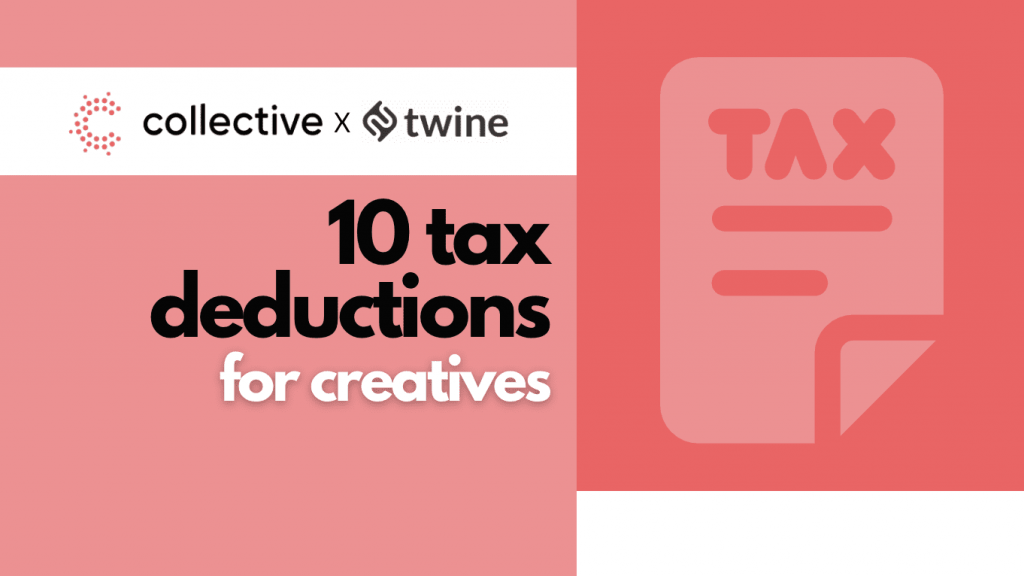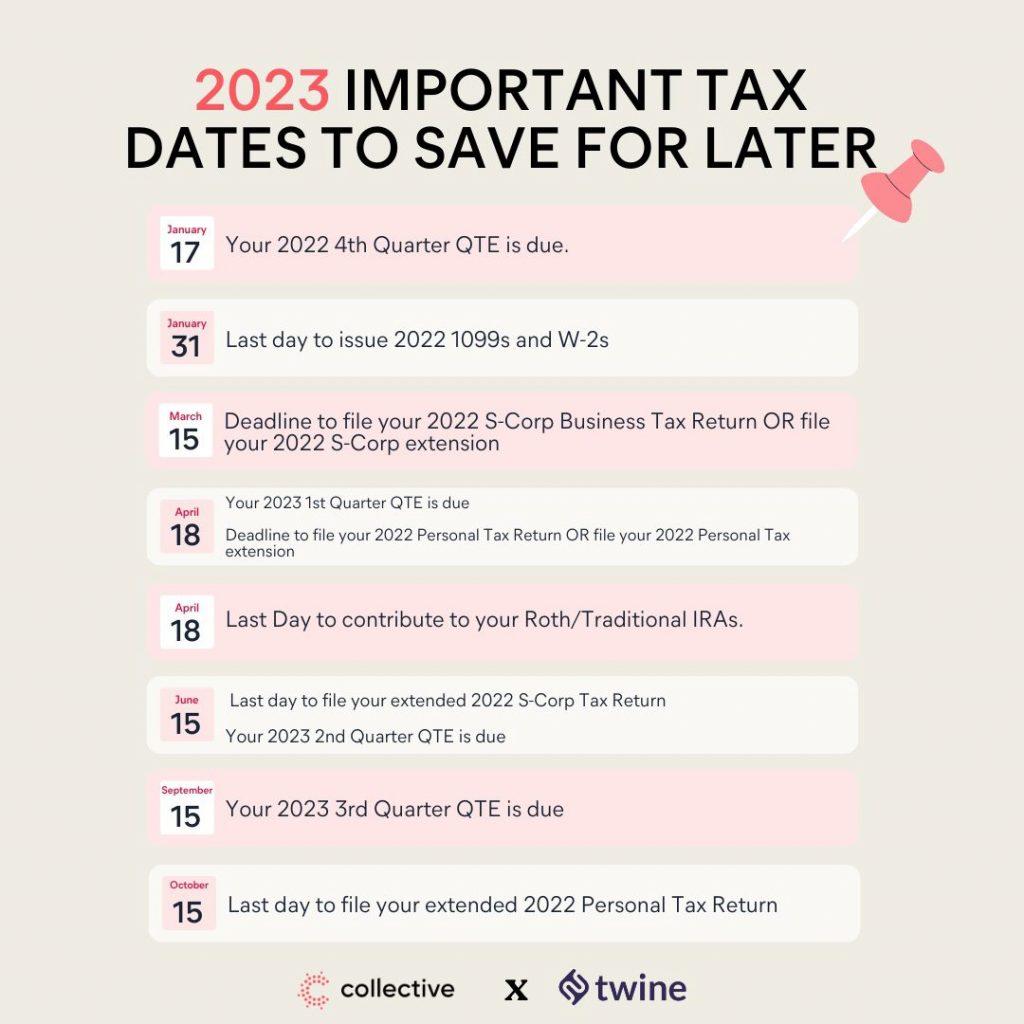
Have you seen this exclusive discount? Twine freelancers can grab 50% off using this all-in-one financial solution…
If freelancing were the wizarding world, tax deductions would be the Hermione of your business – unappreciated but totally badass. Not to mention crucial in defeating Voldemort, a.k.a your taxes.
Like Hermione, most people think tax deductions are boring, stuffy, and a buzzkill, but tax deductions are your number one defense against a huge tax bill. The more you write off, the fewer profits you have to tax, which lowers your taxes.
Ready to get all expelliarmus on your taxes? Here are 10 tax deductions that every freelance creative needs to know.
Ready to be recognized as an expert in your field? Join Twine.
Books and reference materials
When you think about buying a business book, you probably think of a boring reference guide to something painfully dull, like the tax code. As a designer, you can write off books and magazines that you purchase for art references, inspiration, and technical skill training.
You can also write off books that have to do with running a business, even if they aren’t specifically for designers.
Not the paperback type? Digital books and magazine subscriptions are also deductible if they pertain to art, design, or general business management.
Cell phone bill
If you use your personal cell phone for business, you can write off a percentage of your bill.
How much? That depends on the percentage of time you use your cell phone for business versus personal. When figuring out how much you use your phone for business, remember that your cell phone plan includes calls, texts, and data usage.
If you use your phone to check work emails, post to your business’s social media, and access work-related apps, you’re using it for business. Your business use percentage is the percentage of your cell phone bill that you can write off.
For example, if you use your cell phone 50% of the time for work, you can write off 50% of your monthly bill.
That really adds up! If you’re monthly cell phone bill is $120 per month, you can deduct $60 per month, which is $720 a year.
Classes, workshops, and educational events
Improving your design and technical know-how not only helps you rack in more dough but also saves you money on your taxes.
The key to writing off classes and educational events is that they have to pertain to your industry. You can go wild with art and design classes, but you’ll have to pass on that artisan kombucha brewing class (unless you pay for it personally).
Also, you can write off educational events or workshops that have to do with running a business.
Going to a seminar about finding clients on LinkedIn? Deductible.
Attending a conference on social media marketing? Write that baby off!
Signed up for an 8-week course on the nuances of Klingon? Not so fast, buddy.
Examples of what you can write off are:
- Classes from popular online course platforms like Lynda.com, Udemy, and Skillshare
- In-person workshops
- Conferences (virtual or in-person)
- Mastermind groups or retreats
It’s critical to stay informed as a freelancer. You are, after all, your own boss! Check out this handy list of tax dates for 2023 for more information. Make a note of these in your calendar!

Computer and tech equipment
As a designer, you probably know that sluggish computer equipment is a one-way ticket to meltdown town. You also understand that speedy technology ain’t cheap.
The good news? You can write off your computer and tech equipment.
Equipment like laptops, desktops, and monitors are tax-deductible if you use them for business. Smaller tech equipment, like tablets, external hard drives, and USB cords, are also deductible.
For large tech equipment, depending on the cost, you’ll either write off the entire amount in one tax year or spread the deduction out over the course of multiple years using the depreciation method.
A tax person can help you decide the best way to write off your large equipment.
Coworking and other rental space
If you work from home, then you know that after a few days of isolation, you start to feel like Jack in The Shining (step away from the ax). That’s when you turn to coworking spaces.
Besides maintaining your sanity, coworking spaces are a tax write-off. Other places you rent for work, such as spaces for workshops, meetups, or film and photography, are also examples.
Digital design assets
Digital design assets from sites like Creative Market and Envato Market are like a jetpack for your business—they’re fantastic for saving time but aren’t very kind to the wallet.
Unlike a jetpack, which you can only write off if you’re a superhero, digital design assets are tax-deductible.
You can write off fonts, graphics, stock photography, web themes, and templates that you purchase for your business or clients. Plus you can use the money you save on your taxes for your very own Iron Man costume.
Home internet
If you work from home, you get to write off the percentage of your internet.
Just like writing off your cell phone, the first step is to figure out how much you use the internet for business.
Keep in mind that you use the internet for more than sending emails and uploading client files. You also use it to binge-watch Netflix, obsessively look at pictures of your ex, and watch videos of mini pigs shaking their booties.
When calculating your personal and business use, take into account all your internet activities. The percentage of time you use your home internet for business is the deductible percentage of your internet bill.
For example, if you use your internet 60% for business, and your bill is $90 per month, you can write off $45 a month, or $500 a year.
Lyft and Uber
Oh yes, ridesharers, you can write off your Lyft and Uber if your trip is work-related.
This one’s a little trickier, though. If you only work from home and have no other fixed office location, then all of your work travel is deductible.
Work travel includes rides to:
- Meet with clients and colleagues
- Run errands, like going to the post office or office supply store
- Attend work-related events, like meetups, workshops, and networking events
- Go to the airport for business trips
If you have a fixed office location where you do the majority of your work, then rides to and from your home and office are considered commuting miles and non-deductible.
But don’t get too bummed. Any work travel that isn’t between your home and office is deductible.
Software and apps
Do you ever notice how much software you wind up using as a freelancer? If you stockpile apps like I do, you know the feeling. But if you’re going to spend all your taco money on apps, at least you can write them off.
As long as you’re using software for your business, it’s deductible. Type of software freelancers typically use and can write off include:
- Design software like Adobe Suite, Webflow, and Sketch.
- Project management software like Dubsado, Asana, and Basecamp.
- Time tracking software like Toggl, Harvest, and TSheets.
- Accounting software like QuickBooks Online, Xero, and Freshbooks.
- File sharing and storage like Dropbox, Google Apps, and WeTransfer.
- Meeting and scheduling software like Zoom, Calendly, and Acuity.
Website expenses
Your website, much like your Instagram profile, is the fresh-faced, put-together you that you show off to the world. Little do they know that you’re really working in a Carebear onesie and unicorn slippers.
As a designer, your website is under serious scrutiny, so it’s essential that you keep it looking its best. Luckily, all of the costs of your website are tax-deductible, including:
- Web hosting
- Domain name
- Plugins
- Stock Photography
- Website subscription services
Now that you’ve got all the spells and charms you need to defeat your taxes, consider adding a robe and wand to the mix. Who knows, maybe next year you’ll be so good at writing off your tax deductions that you’ll get an invitation to Hogwarts in the mail!
Join the community of self-employed experts
Collective handles your tax deductions and accounting, giving you more time to focus on your passion. A member can set up an LLC, choose to be an S Corp, have their books kept, report on their finances every month, and save on taxes by an average of $10,000*. Estimate your tax savings to get started.
Start Tax Calculator
Ready to get hired? At Twine, we have dozens of top-quality jobs being posted each and every day. There is a job waiting for your skills in everything from design to marketing, development, and copywriting. Join the marketplace of diverse creative talent here.








